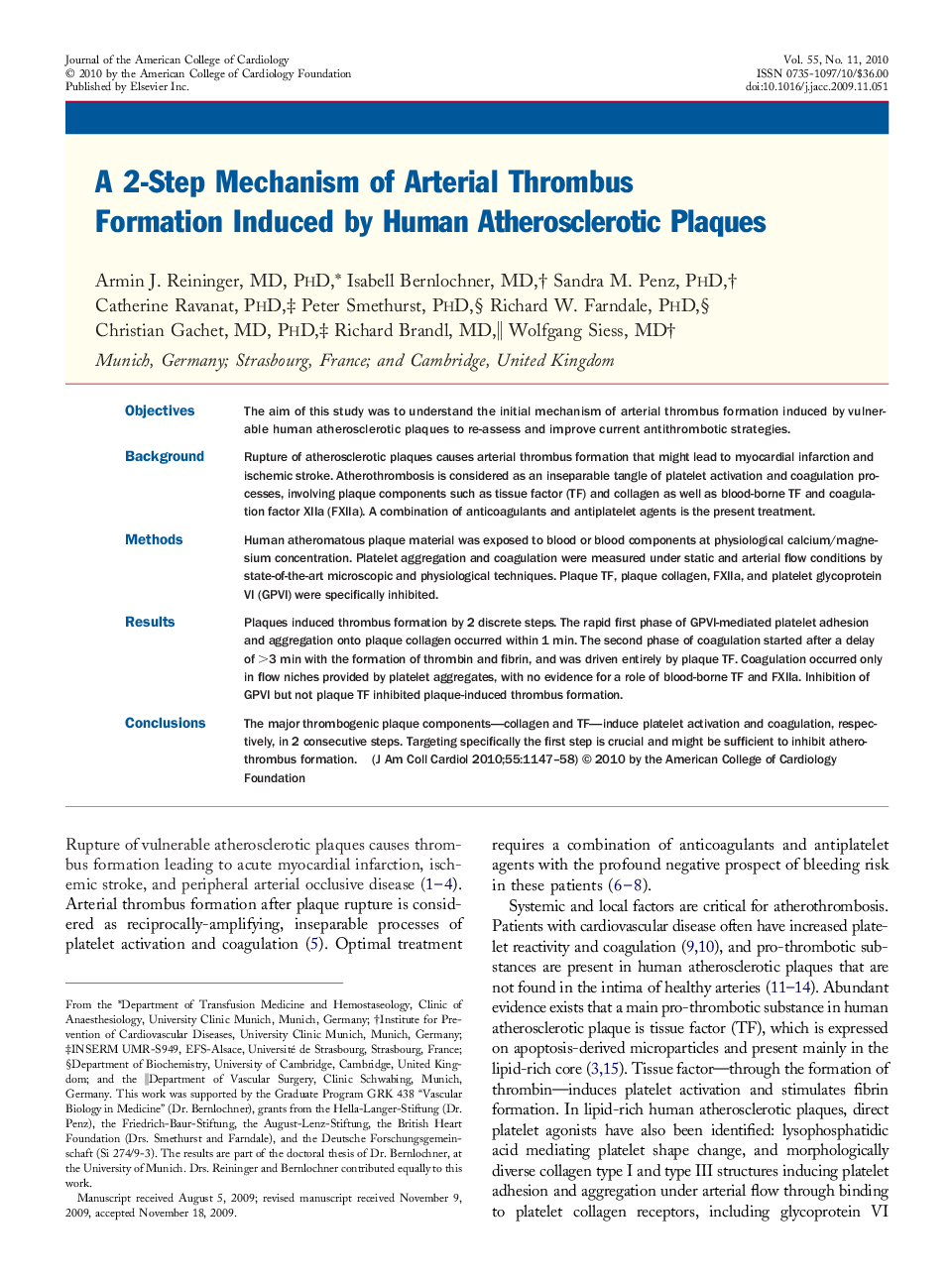| Article ID | Journal | Published Year | Pages | File Type |
|---|---|---|---|---|
| 2949523 | Journal of the American College of Cardiology | 2010 | 12 Pages |
ObjectivesThe aim of this study was to understand the initial mechanism of arterial thrombus formation induced by vulnerable human atherosclerotic plaques to re-assess and improve current antithrombotic strategies.BackgroundRupture of atherosclerotic plaques causes arterial thrombus formation that might lead to myocardial infarction and ischemic stroke. Atherothrombosis is considered as an inseparable tangle of platelet activation and coagulation processes, involving plaque components such as tissue factor (TF) and collagen as well as blood-borne TF and coagulation factor XIIa (FXIIa). A combination of anticoagulants and antiplatelet agents is the present treatment.MethodsHuman atheromatous plaque material was exposed to blood or blood components at physiological calcium/magnesium concentration. Platelet aggregation and coagulation were measured under static and arterial flow conditions by state-of-the-art microscopic and physiological techniques. Plaque TF, plaque collagen, FXIIa, and platelet glycoprotein VI (GPVI) were specifically inhibited.ResultsPlaques induced thrombus formation by 2 discrete steps. The rapid first phase of GPVI-mediated platelet adhesion and aggregation onto plaque collagen occurred within 1 min. The second phase of coagulation started after a delay of >3 min with the formation of thrombin and fibrin, and was driven entirely by plaque TF. Coagulation occurred only in flow niches provided by platelet aggregates, with no evidence for a role of blood-borne TF and FXIIa. Inhibition of GPVI but not plaque TF inhibited plaque-induced thrombus formation.ConclusionsThe major thrombogenic plaque components—collagen and TF—induce platelet activation and coagulation, respectively, in 2 consecutive steps. Targeting specifically the first step is crucial and might be sufficient to inhibit atherothrombus formation.
